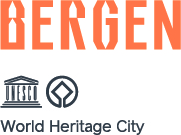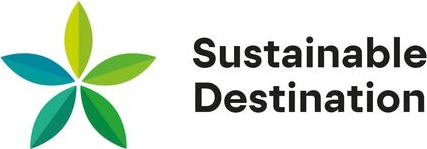Fishing is a great way of experiencing Norwegian nature and wilderness. In this article you will find general information about places to fish, fishing rules, safety measures, and advice for more sustainable fishing.
Fishing spots in and around Bergen
Whether you are fishing from land or a boat there are many excellent fishing spots in Bergen.
- Bontelabo pier is located only a few minutes from the famous World Heritage Site Bryggen. This location is especially good for fishing ratfish.
- Steinestø Fergekai is an old ferry quay with deep waters. It is located in the area of Åsane, not that far from the city center.
- Rongesundet is another place about an hour away from the city centre. It is a popular fishing spot. You can fish from land on the bare rock-face, but be careful, it can be slippery when wet.
- Fedje is a small island municipality two hours from Bergen. This is an excellent place if you want to fish from a boat. Even beginners have a chance of catching a big fish here!
- Marstein Fyr lies on an island in the municipality of Austevoll, a little under two hours from Bergen. The fishing opportunities in the sea surrounding the island are plentiful.
Fishing trips
If you have little experience going out in a boat but wish to have a real fishing experience a trip with Fjord Expedition is a great option. Discover the wonders of sea life and nature, while learning how to fish and cook like a pro.
Responsible fishing
The earth is often called the blue planet, and the ocean serve important functions as a source of food and regulating the temperatures on earth. The ocean and the species that inhabit it are vulnerable, their populations have declined drastically in recent times because of overfishing and global warming. One of the most important things you can do when going fishing is to follow the rules and regulations, in addition you can make conscious decisions about what fish you choose to bring home.
Some species are not legal to fish at all, like freshwater eels, blue ling, spiny dogfish, porbeagle, basking shark and silky shark. Other species are endangered in varying degrees, but still permitted to fish at certain times or areas. To preserve and burden the ocean as little as possible you should avoid or fish less of species such as salmon, lobster, haddock, goosefish, cusk, halibut, and cod. Of course, you cannot control what type of fish you catch, but in most cases, you can release the catch you don’t need or want. In this list you can find an overview of endangered marine species in Norway by selecting Norway in the area tab.
Safety first!
Whether you are fishing from land or a boat it is important to think about safety. Tell someone where you are going, and preferably do not go alone. The weather in Norway can be unpredictable and can change in just a short amount of time. Because of this it is important to check the weather forecasts, and always be willing to change you plans to what the weather allows. Dress in warm and weather-proof clothing when staying outside for a long time. Always use a lifejacket and listen to the advice of locals.
If you are fishing from land you need to be aware that the tides along with wind can make the ocean swell on short notice. Waves can suddenly reach further inland, and potentially drag you out to sea. Keep a good distance to the waterfront, use a lifejacket and keep an eye on the waves. When fishing in a river or waterway it is important to get acquainted with the waterflow and current, some rivers are regulated, and the flow of water can change on a very short notice.
Fishing in the ocean
• When fishing from land, one fishing pole with to baits are allowed per person.
• When fishing from a boat, two poles or fishing tools with one bait is allowed per person.
• It is free to fish in the ocean.
• Anyone born after 1980 needs a boating license if the boat is longer than eight meters or has more than 25 HP.
• There are minimum size requirement for cod, haddock and crab. Read more about size restrictions here.
• You need to keep a distance of 100 meters to fishing farms and river outlets.
• There is several conservation zones, for example near the Straume bridge from 15th of May until 30th of December.
• Fishing traps must be clearly marked with name and address.
• None-professionals can export 18 kg of fish twice a year, given documentation from a registered tourist fishing camp. It it illegal to sell your catch.
Fishing cards
If you are planning to fish in freshwater lakes or rivers, you need to buy a fishing card. There are several ways to buy fishing cards. Fishing cards are normally issued from the local landowner or a fishing organization. A selection of fishing cards can be bought online at inatur.no. It is also possible to buy in sport shops, convenience stores or at campsites nearby your fishing location.
The municipality of Bergen gives out free fishing cards that can be used to fish in 30 lakes around the city. You can get the fishing card at mittfiske.no. The same website also provides information about fishing in lakes in Bergen. Use this map for a more comprehensive overview of fishing lakes in the municipality.
Freshwater fishing
Before you can start freshwater fishing you need a fishing card. It is illegal to use poison, explosives, electricity, firearms, artificial lighting, tridents or to use living fish as bait. It is only legal to fish for harvestable species, especially freshwater eel is almost extinct and illegal to fish.
Fishing in rivers and watercourses
To fish in rivers and watercourses you first have to buy a fishing card from the landowner. It is allowed to use one fishing rod or hand line per person. Worms, lures, spinners, wobbler and flies are allowed types of bait. There are also regulations on the sizes of corks.
If you are fishing for salmon and sea trout you have to pay a fishing fee to the government. Specific fishing times, minimum sizes and quotas varies between different rivers. If you are planning to go fishing, it is your responsibility to learn about the relevant rules and regulation that apply where you are going fishing. The salmon population has been strongly reduced in recent times. Choosing not to fish salmon gives the population a stronger chance of rebuilding.
Seafood in Bergen
Bergen and Norway has a long tradition for fishing and trading fish. Read more about seafood in Bergen and the traditional Bergen fish soup. And should you come back from your fishing trip empty-handed, there is a large selection of very nice fish restaurants in Bergen.
 to add an item to your Itinerary basket.
to add an item to your Itinerary basket.








